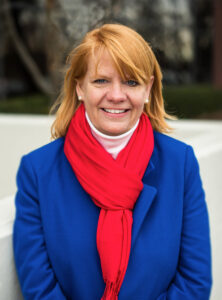Another 10 mistakes that can be disastrous to your retirement from federal service.

Hello readers. As promised here are the next ten errors that I identified when I began working on my article series “Ten Easy Ways to Ruin a Federal Retirement.”
In my first series, I tried to concentrate on the big impact mistakes that could derail your financial dreams. In this list I include some of the sneaky oversights that, in combination, can curtail getting the most from your federal retirement benefits. I will mainly be addressing the FERS system employees, but the concepts translate to CSRS, CSRS-Offset, and Special Provisions as well. As I did before, I will provide the main list now and will dive deeper into each in my follow-ups.
So off we go to number one:
1. Unrealistic Retirement Date
OK, I know that you would never be unrealistic about something as important as your retirement date. But in this case, I’m referring to two possibilities. First, locking in on a minimum retirement age date and not locking in on things like maximizing TSP early and often. Or, second, initially selecting a later retirement date recognizing that building up to max TSP contribution might take some time, and then adjusting that target retirement date earlier due to fatigue or even burn out.
2. Never Catch Up
Nope, I don’t mean chasing something that is faster than you. I mean bypassing a great gift within the tax code whereby you may increase your TSP (And Roth TSP) contributions after age 50. I’ll say it again, you may increase your contributions after age 50, EVEN IF YOU HAVE MAXIMIZED FROM DAY ONE!!
3. Slip on Social Security
Again, a common damaging piece of popular wisdom is, “I can take my social security at 62, YAY.” Nooo! When you claim early, you consent to a permanent reduction to your earned benefits. One of our founding partners coined this phrase: “Social Security is not a no-brainer. It is a ‘brainer’ and if you get it wrong, it becomes a migraine-er.”
4. Lax on Leave
Please hear me now: All leave is not created equal. Use or lose annual leave can become a powerful planning tool. Why? Because unless you are truly burning to take the last two weeks of the year off each and every December, use it instead of sick leave during the year. More on this in my follow up.
5. Mess Up Medicare
Jen, I’ve got FEHB. I don’t need Medicare, right?
I can answer that with an emphatic, and unequivocal… it depends. (Sorry, had to borrow that from the legendary Ed Zurndorfer). Seriously, this one needs some real consideration. What is your degree of health? Do you have any chronic conditions? How often do you exceed your out-of-pocket expense limit?
6. Slack on Survivorship
OK. Technically, getting this one wrong won’t blow up YOUR retirement. But it will have a profound impact on your surviving spouse. One of the “hot topics” that tends to pop up around retirement is alternatives to electing survivorship on your pension. Be very wary, the fall out can include your survivor spouse losing health insurance after you are gone. (And don’t get me started on the impact if you have a disabled child). Much to say on this in my follow up.
Complimentary Webinars:
7. Miss the Hidden Power of the HSA.
Ok. So, I broke my string of catchy alliterations. This one is too awesome to try to be cute with words. What if I told you that you could put money away Pre-tax, invest it for growth and then withdraw to use in retirement TAX FREE! Are there rules? Yep. Does it require planning and specific execution? Yep. Can I tell you how? You bet!
8. Sleep on Small Cap
And we’re back to clever wording. Arguably one of the highest performing investment asset classes is US Small Cap. (Especially Small Cap value, but more on that in another article.) Sitting in C fund is actually leaving money on the table. As is hiding out in Lifecycle Funds. (Hint: they underweight in small cap.)
9. No Withdrawal Strategy for TSP
Ok. It’s a boring topic and the plans keep raising premiums (Even the Fed plan). But it is still an issue. You need to take a stark view of your resources and obligations and have a working strategy in advance. Will you seek in home care? Might you need a facility? Ask the hard questions NOW! (Hint: TSP balance is not a cure all.)
10. Roll without Roth
Hands down, Roth TSP is one of the most underused retirement benefits in federal service today. In my follow-up, I will plead for you to consider making use of this great tool.
So, there you have it. My second ten. I reiterate: no single one will blow up your retirement picture, but missing on a few of them can make that picture far less idyllic. (OK… I’ve been waiting to sue that word).
Thank you for reading and I will be back with my first detailed follow up.
BW2R (Bonus Way to Ruin)
Place your order without a COLA on the side.
JEN!! How long have you been holding that one?
Ok, you’re right. This is too important to lead with a joke. One of the hidden traps within MRA for FERS retirees is missing out on COLAs for a bit. If you are not special provisions and do not retire due to disability, YOU WILL NOT RECEIVE COST-OF-LIVING ADJUSTMENTS UNTIL AGE 62.
If you retire at 57 that’s 5 years. AND, to add insult to injury, the FERS special retirement supplement is not eligible for cost-of-living increases. This has not been a prominent point because inflation has been so low for so long. I promise to dig into this more in the follow up articles.
**Written by Jennifer Meyer, Financial Planner. The information has been obtained from sources considered reliable but we do not guarantee that the foregoing material is accurate or complete. Any opinions are those of Jennifer Meyer and not necessarily those of RJFS or Raymond James. Any information is not a complete summary or statement of all available data necessary for making an investment decision and does not constitute a recommendation. Investing involves risk and you may incur a profit or loss regardless of strategy suggested. Every investor’s situation is unique and you should consider your investment goals, risk tolerance, and time horizon before making any investment or financial decision. Prior to making an investment decision, please consult with your financial advisor about your individual situation. While we are familiar with the tax provisions of the issues presented herein, as Financial Advisors of RJFS, we are not qualified to render advice on tax or legal matters. You should discuss tax or legal matters with the appropriate professional. *****The Thrift Savings Plan (TSP) is a retirement savings and investment plan for Federal employees and members of the uniformed services, including the Ready Reserve. The TSP is a defined contribution plan, meaning that the retirement income you receive from your TSP account will depend on how much you (and your agency or service, if you're eligible to receive agency or service contributions) put into your account during your working years and the earnings accumulated over that time. The Federal Retirement Thrift Investment Board (FRTIB) administers the TSP.***



